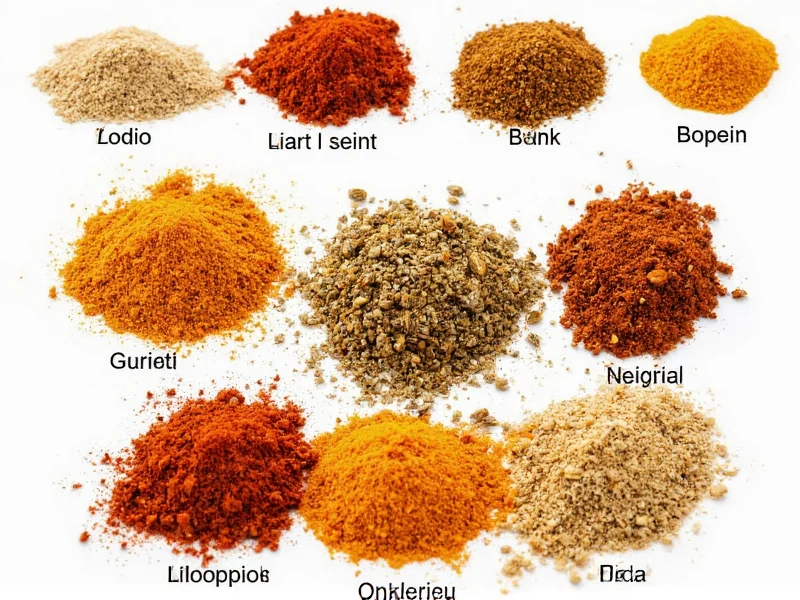When exploring what curry spices are, it's essential to understand they're not a single spice but rather carefully balanced mixtures that create complex flavor profiles. These blends transform simple ingredients into vibrant, aromatic dishes that have captivated palates worldwide for centuries.
The Essential Components of Curry Spices
While curry spice recipes vary across cultures, certain spices consistently form the backbone of these blends. Turmeric serves as the visual and flavor anchor, delivering earthy notes and that distinctive golden hue. Coriander seeds contribute citrusy warmth, while cumin provides that characteristic earthy depth. Fenugreek adds subtle bitterness that balances the blend, and chili peppers introduce varying heat levels depending on regional preferences.
| Core Spice | Flavor Profile | Primary Function |
|---|---|---|
| Turmeric | Earthy, slightly bitter, peppery | Provides golden color, foundational flavor |
| Coriander | Citrusy, floral, mild | Balances bitterness, adds brightness |
| Cumin | Earthy, warm, slightly smoky | Creates depth, signature curry aroma |
| Fenugreek | Bitter, maple-like, nutty when toasted | Complexity, balances sweetness |
| Cardamom | Floral, citrusy, slightly sweet | Added dimension, aromatic lift |
Regional Variations of Curry Spice Blends
Understanding what curry spices are requires examining how different cultures interpret these blends. Indian cuisine features numerous regional variations, with South Indian curry powders often including more lentils and dried shrimp while North Indian blends emphasize warming spices like cinnamon and cloves. Garam masala, frequently confused with curry powder, represents a distinct blend typically added at the end of cooking rather than used as a base.
Thai curry pastes diverge significantly from dry spice blends, incorporating fresh ingredients like lemongrass, galangal, and kaffir lime leaves into wet pastes. Japanese curry powder, developed during the Meiji era, contains more mild spices like poppy seeds and sesame, creating a sweeter, less intense profile perfect for their beloved curry rice dishes.
Creating Authentic Curry Flavor Profiles
Professional chefs achieve authentic curry flavors through proper spice handling techniques. Toasting whole spices before grinding releases essential oils and creates more complex flavor compounds than using pre-ground versions. The sequence of adding spices during cooking dramatically affects the final dish—tempering spices in hot oil first creates a flavor base, while adding certain spices later preserves their delicate aromas.
For home cooks wondering what spices are in curry powder specifically, a basic homemade blend combines two tablespoons each of coriander and turmeric, one tablespoon each of cumin and fenugreek, plus half tablespoons of chili powder, ginger, and mustard seeds. Adjusting ratios creates different regional profiles—increasing turmeric yields a more traditional Indian curry, while adding coconut and lemongrass moves toward Thai interpretations.
Storage and Freshness Considerations
Curry spices lose potency rapidly when exposed to light, heat, and air. For optimal flavor, store blends in airtight containers away from stovetops and windows. Whole spices maintain freshness for up to two years, while ground blends should be used within six months. Serious enthusiasts often grind small batches weekly to ensure peak flavor intensity in their dishes.
Health Benefits of Curry Spices
Beyond flavor, curry spices offer notable health properties. Turmeric contains curcumin, a compound studied for its anti-inflammatory effects. Cumin aids digestion, while fenugreek shows potential blood sugar regulation benefits. The synergistic effect of these spices working together may provide greater health benefits than individual components consumed separately.
Frequently Asked Questions
What's the difference between curry powder and garam masala?
Curry powder serves as a foundational spice blend added early in cooking, typically containing turmeric which gives curry its yellow color. Garam masala is a finishing spice blend without turmeric, added at the end of cooking to preserve its delicate aromas. While curry powder creates the base flavor profile, garam masala enhances and complements already prepared dishes.
Can I substitute curry powder if I don't have it?
Yes, you can create a basic substitute using equal parts turmeric, coriander, and cumin. For every teaspoon of curry powder needed, combine 1/2 teaspoon turmeric, 1/4 teaspoon coriander, and 1/4 teaspoon cumin. Add a pinch of chili powder for heat and a dash of ginger for complexity. While not identical to commercial blends, this mixture provides the essential flavor profile for most recipes.
Why does my curry powder smell different from restaurant versions?
Commercial curry powders often contain lower quality or stale spices to reduce costs. Restaurant-quality blends typically use freshly ground whole spices in precise ratios. The difference you notice likely comes from fresher ingredients and proper toasting techniques. For authentic flavor, toast whole spices in a dry pan until fragrant before grinding them yourself.
Are all curry spices yellow?
No, curry spices vary widely in color depending on the blend. While turmeric-based blends appear yellow or orange, Thai red curry paste gets its color from dried red chilies, green curry from fresh green chilies and herbs, and Japanese curry often has a brownish hue. The misconception that all curry is yellow stems from popular Western interpretations of Indian cuisine.
How can I make my curry spices more flavorful?
For maximum flavor, toast whole spices before grinding them. Heat a dry skillet over medium heat, add spices, and stir until fragrant (about 1-2 minutes). Cool completely before grinding. When cooking, bloom the spices in hot oil first to release essential oils before adding other ingredients. Using fresh, high-quality spices makes the most significant difference in flavor intensity and complexity.











 浙公网安备
33010002000092号
浙公网安备
33010002000092号 浙B2-20120091-4
浙B2-20120091-4